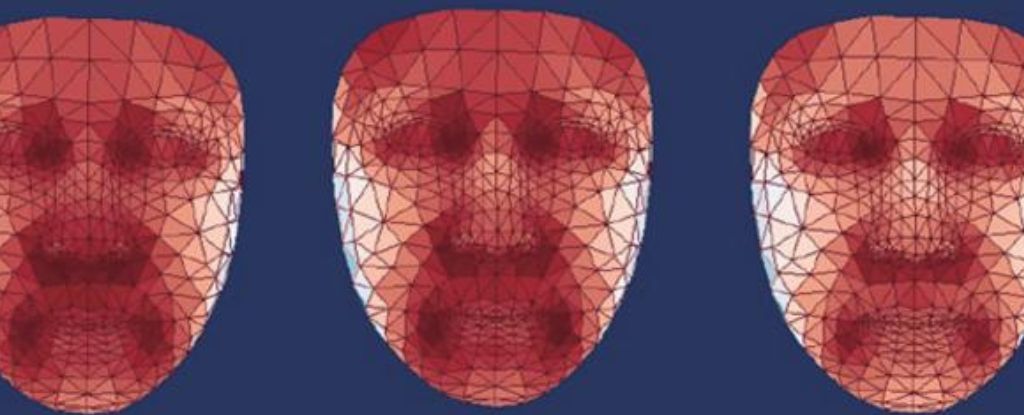A quick scan of your face could one day reveal how well you are aging and whether you are at risk of developing certain diseases.
Scientists in China have found that a comparison of the heat coming off a person’s nose, cheeks, and eye area could be an “ideal monitoring and screening tool for healthy aging“.
Trained using facial temperature data from 2,811 Chinese participants between the ages of 21 and 88, their artificial intelligence program identified several facial thermal patterns that could hint at a person’s ‘biological clock’.
For instance, the temperature of an individual’s nose was found to decrease with age faster than other regions of their face, whereas the temperature around their eyes tended to increase with age.
This means that those who have warmer noses and cooler areas around the eye may have a facial thermal clock that is ticking slower.
But what does that have to do with a person’s health?
Researchers found that an individual’s thermal profile was linked to certain lifestyle factors and metabolic health. Those with diabetes showed a facial thermal profile more than six years older than their healthy peers of the same age.
In fact, the machine learning model was able to automatically process and analyze a person’s facial thermal map to predict if they had a metabolic disorder, like fatty liver disease or diabetes, with over 80 percent accuracy.
In the study, those with a metabolic disorder were more likely to show higher temperatures in the eye area than their healthy, age-matched, and sex-matched counterparts.
What’s more, participants with elevated blood pressure showed increased temperatures in the eye area and cheeks regardless. Males with hypertension were typically observed with relatively colder noses.
“The thermal clock is so strongly associated with metabolic diseases that previous facial imaging models were not able to predict these conditions,” says Jing-Dong Jackie Han from Peking University in China.
“We hope to apply thermal facial imaging in clinical settings, as it holds significant potential for early disease diagnosis and intervention.”

Even among those born in the same year, biological clocks tick faster or slower, meaning everybody ages differently.
For years, scientists have tried to devise ways to read the time on this hidden measure of health. But apart from some non-invasive options, like scanning the human eyeball, tests that measure the physical signs of biological aging – especially those in the blood – have been hard to achieve in a quick, convenient, or affordable way .
Human faces contain “a wealth of information” that could be easily accessed for this very purpose, the researchers argue.
While a person’s core body temperature is known to decrease with age, the way that a person’s facial temperature changes over time remains largely unknown. Studies have often tied high body temperatures to high metabolic rates, and now, the same seems to hold true for facial temperatures, too.
The current research is limited by samples of data collected on people from China, which means it’s unclear if the results can be generalized to other populations. Heat emitted by the face can also be affected by the environment and emotions, which is why participants were imaged in a temperature-controlled room while they were in a calm state.
To investigate why thermal facial images were changing with age, researchers analyzed the bloodwork of 57 healthy individuals from a hospital in China, along with thermal and 3D facial readings of this smaller cohort.
The team found that an increase in temperature around the eyes and cheeks was linked to an increase in cellular activity tied to inflammation.
In another investigation, the researchers asked 23 participants to jump rope every day for two weeks, to see if exercise could have an effect on thermal facial ‘age’. By the end of the study period the cohort had reduced their thermal age by an average of five years, while their non-jumping peers showed no significant difference.

More research needs to be done to confirm and explain these associations, but the results are promising enough that the study’s researchers will continue to explore whether thermal facial imaging can predict healthy aging in other ways, too.
The study was published in Cell Metabolism.





